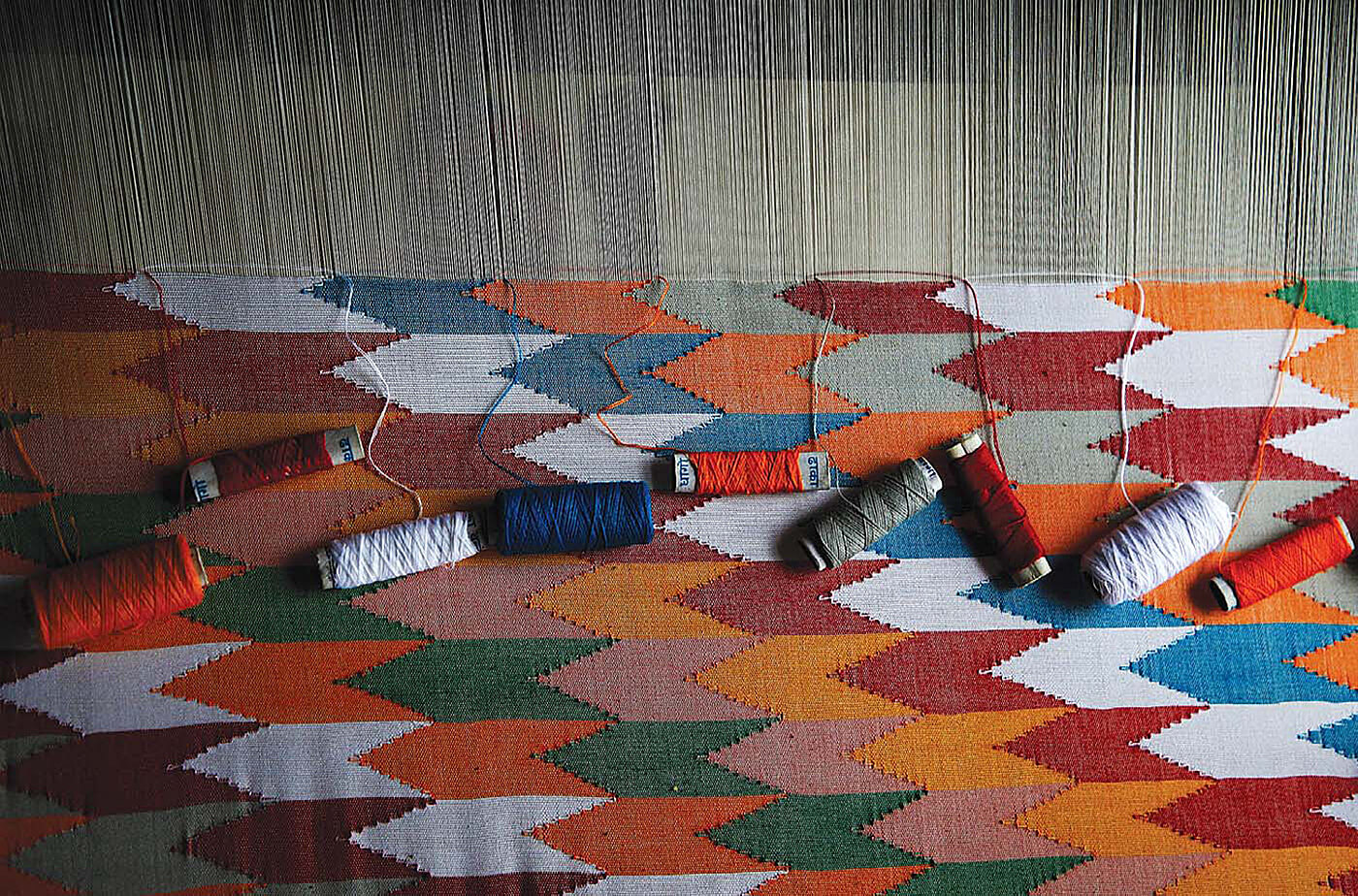From heads to toes
Nepal’s traditional dhaka fabric makes a subtle entry into contemporary fashionKing Mahendra made it mandatory for government officials to don the dhaka topi to work 60 years ago, giving the traditional weave state sanction. The fabric had been part of Nepal’s unofficial national dress long before that royal nod, and is today becoming a fashion item.
Dhaka fabric is no longer restricted to the ubiquitous topi — today it is used in saris, shawls, wedding jackets, cushion covers, tote bags and even shoes. In recent years, Nepali designers have experimented with the traditional cloth, transforming both its conventional geometric patterns and colours.
Dochaa, a Nepali shoe brand, has curated a line of minimalistic tie-up sneakers with a patch of traditional Nepali fabric woven in (see photos). Their flagship shoe: The Buna Dochaa (buna means woven) comes in maroon and grey dhaka and is woven in looms in Dhankuta, Terathum, Palpa, Kathmandu and Lalitpur.



“We wanted to connect urban and semi-urban Nepalis with traditional dhaka fabric,” says co-founder Watsal Rajbhandari. “Fabric from different parts of the country have distinctive weaves, so we wanted to create a contemporary footwear with that fabric as it would be appealing to our customers, who shy away from 'glammed' and glittery use of dhaka.”
Dochaa has chosen to be understated, but other designers have been more audacious with their use of dhaka. Actress Swastima Khadka recently wore a full dhaka fabric pantsuit at the SAARC Film Festival, where she won an award for her performance in Bulbul. The outfit was designed by Muku Boutique’s Mukta Shrestha.
“Seeing how young, modern and bright Swastima is, I wanted to create something that reflected her contemporary style,” says Shrestha for whom dhaka is an “exciting fabric” with limitless possibilities. Her modern take on dhaka involves bold, bright colours and innovative patterns.
Read Also: Clothed in cannabis in Kathmandu, Pema Sherpa


Photos: LAKHEY NEPAL
“Whenever you see dhaka fabric, it is visible, it is very Nepali,” says Shrestha, adding that she wants to bridge the disconnect between urban youth and the classic fabric by developing her own patterns and colours to customise dhaka according to the latest trends for items like evening gowns.
Designer Erina Shrestha, founder of Lakhey Nepal (pictured above), focuses more on the fabric itself rather than experimenting with patterns, melding traditional dhaka with her minimalist clothing designs for a nostalgic effect.
“To me, the dhaka fabric is very unusual because of the widely used colour choices. The greens, blues, red and oranges do not go with the aesthetic I want for my brand,” she says, which is why her use of dhaka is limited to the fabric itself, choosing solid colours instead of multi-colour patterns.
Currently, Shrestha is simplifying dhaka with pastel patterns that she plans to use in designing full-length overcoats, preserving the fabric’s simple woven foundation without the distracting colours.
Read Also: A post mortem of Nepal’s garment boom, Sewa Bhattarai
Is dhaka from Dhaka?

Although the dhaka fabric is now emblematic of Nepal’s national dress, it did not originate here. As its name suggests, it actually came from southeast Asia, via then East Bengal during the British days. In fact, experts have traced the patterns and colours of Nepali dhaka to the Bangladeshi jamdani dhakai.
While the patterns vary, simply because each piece is a unique creation of the maker, the Nepali dhaka and the jamdani dhakai are both made with cotton, and mainly in handlooms.
‘The geometric flower designs of Bengal’s fabled woven air or jamdani textiles has been skilfully interpreted by the Nepali weaver and block-printed to create the dhaka textile,' writes Emma Martin, curator and lecturer in museology at the University of Manchester.

Martin could have been referring to Jessie Brown (1888-1983), a British woman who came to Nepal in the 20th century as a nurse of Princess Nani, the granddaughter of Chandra Shumsher. ‘Brown produced a design that was “heavily influenced by jamdani and dhaka textile motifs”,' says Martin in her sketchbook.
Mohan Raj Sharma (pictured below with dhaka topi) of Palpali Dhaka Pasal in Maitidevi, who has been in the dhaka business for more than 30 years, says that most dhaka traders believe that the Nepali dhaka was inspired by fabric brought from Dhaka in East Bengal, which became Bangladesh in 1971.
But how did Palpa become famous for dhaka weaves? Sharma says that in the late 1950s, Ganesh Man Maharjan from Palpa travelled to Dhaka (then in East Pakistan) and encountered beautiful saris made from the delicate muslin jamdani dhakai.

After learning the process from weavers, Maharjan set up his own factory in Tansen, the Swadeshi Vastrakala Palpali Dhaka, establishing an industry worth more than Rs200 million a year today, according to the Micro Enterprise Development Program.
Indeed, Bangladeshi jamdani dhakai closely resembles the Palpali dhaka with its thinner threads, unlike the thicker Purbeli dhaka fabric, and seems to have inspired the Nepali dhaka we see today.
According to Sharma, Nepali weavers had to minimise costs so opted for geometrical patterns that were more convenient to design and print, and a sturdier weave to withstand the mountain cold.




